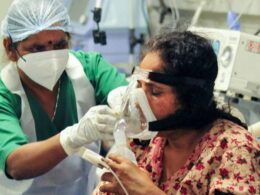Harvard Business School Online
Catherine Cote
18 FEB 2021
In health care, decisions often have life-altering outcomes-both for patients and the population as a whole.
The ability to quickly gather and analyze complete, accurate data enables decision-makers to make choices regarding treatment or surgery, predict the path of large-scale health events, and plan long-term.
Whether you’re a medical practitioner working directly with patients or a health care administrator dealing with the industry’s business side, data analytics can provide a foundation for sound, impactful decision-making.
Here’s a look at what data analytics is, examples of how it applies to health care, common pitfalls to avoid, and how to build your data skills as a health care professional.
What Is Data Analytics?
Data analytics is the process of interpreting quantitative data to reveal qualitative insights, answer questions, and identify trends.
You can analyze data manually or with the help of software and algorithms.
Visualizing data by creating graphs and charts can be useful for designing presentations and showing trends.
Data analytics is the process of interpreting quantitative data to reveal qualitative insights, answer questions, and identify trends.
There are four key types of data analysis:
- Descriptive analysis, which examines and describes something that’s already happened
- Diagnostic analysis, which seeks to understand the cause of an event
- Predictive analysis, which explores historical data, past trends, and assumptions to answer questions about the future
- Prescriptive analysis, which identifies specific actions an individual or organization can take to reach future outcomes or goals
In health care, all four types can be used. For example:
- Descriptive analytics can be used to determine how contagious a virus is by examining the rate of positive tests in a specific population over time.
- Diagnostic analytics can be used to diagnose a patient with a particular illness or injury based on the symptoms they’re experiencing.
- Predictive analytics can be used to forecast the spread of a seasonal disease by examining case data from previous years.
- Prescriptive analytics can be used to assess a patient’s pre-existing conditions, determine their risk for developing future conditions, and implement specific preventative treatment plans with that risk in mind.
3 Applications of Data Analytics in Health Care
Data analytics can have far-reaching effects on the health care industry. Here are three examples to consider for your organization.
- Evaluating and Developing Practitioners
- Detecting Anomalies in Scans
- Predicting Outbreaks
1. Evaluating and Developing Practitioners
Data gathered from patients regarding their experiences with medical practitioners can be analyzed to reveal areas for improvement.
One example is Dr. Helen Riess’s research on empathy in physicians. After noticing that objective, scientific facts were often prioritized over a patient’s experience of their symptoms during appointments, she conducted a study in which patients rated their doctors on a scale of how empathetic they perceived them to be during visits.
After gathering the data, half of the doctors received empathy training, while the other half did not.
The doctors were again rated, and the group that received training was rated more empathetic than the control group.
By analyzing patient-reported data, Riess discovered that training could increase physicians’ empathy, which has been associated with greater patient safety and fewer malpractice claims.
2. Detecting Anomalies in Scans
Another way to leverage data analytics in health care is with machine-learning algorithms. When used correctly, algorithms can analyze data more quickly and efficiently than humans.
For instance, in 2018, researchers at the Massachusetts Institute of Technology created an algorithm that detects differences between 3D medical images, such as MRI scans.
Because of the algorithm’s ability to learn based on data it’s previously received, it can identify differences in scans more than one thousand times faster than a human doctor.
In the Harvard Online course Data Science Principles, Professor Dustin Tingley warns against relying too heavily on algorithms.
“Without human thought and guidance throughout the entire process, none of these seemingly fantastical machine-learning applications would be possible,” Tingley says.
When paired with your critical thinking and knowledge as a medical practitioner, machine-learning algorithms could potentially save both time and lives.
3. Predicting Outbreaks
Data analytics can also predict trends in the spread of illness, allowing doctors’ offices, hospitals, schools, and individuals to adequately prepare.
In Data Science Principles, Tingley explains how the Centers for Disease Control and Prevention (CDC) leverages data to predict the next flu outbreak.
“The CDC has been collecting data about reported cases of the flu for over a decade,” Tingley says. “Using that data to help forecast the severity of future flu seasons can help you make decisions.”
In the course, Tingley outlines how the CDC gathers flu data from participating doctors’ offices and hospitals, and how that data informs the actions of local decision-makers, such as school principals. This is an example of both predictive and prescriptive analytics because the CDC uses historic and current data to predict trends and drive action.
Similar to the flu example is the coronavirus (COVID-19) pandemic.
Analyzing data to predict future spikes in cases can help hospitals ensure staff have enough personal protective equipment and patient beds. It can also enable school administrators to decide whether in-person learning is a safe option, and individuals to make sound choices regarding personal safety and hygiene, social distancing, and travel.
Potential Pitfalls to Avoid
While data analytics has the power to drive positive change, it can create and perpetuate issues.
When handling patient data, keep in mind that it’s sensitive, personally-identifiable information (PII) and must be protected at all costs. As a medical professional or administrator, it’s your responsibility to keep your patients’ information secure while improving their health and wellbeing.
It’s also important to catch and correct biases in algorithms when analyzing data. Because people write algorithms, they often display human bias.
With race, gender, sexuality, socioeconomic status, and geographic factors contributing to unequal health care access, algorithms meant to draw conclusions about the population as a whole may not receive data from certain minority groups and generate inaccurate, potentially damaging conclusions.
Machine-learning algorithms learn based on the data they’re given, so ensure your data comes from a truly representative sample comprised of various demographics before drawing conclusions.
Setting a Strong Foundation for Better Health Care
To use the abundance of health care data to positively impact both patients and the industry alike, brush up on your analytical skills and knowledge of data privacy best practices.
Originally published at https://online.hbs.edu on February 18, 2021.
About the Author

Catherine Cote is a marketing coordinator at Harvard Business School Online. Prior to joining HBS Online, she worked at an early-stage SaaS startup where she found her passion for writing content, and at a digital consulting agency, where she specialized in SEO.
Catherine holds a B.A. from Holy Cross, where she studied psychology, education, and Mandarin Chinese. When not at work, you can find her hiking, performing or watching theatre, or hunting for the best burger in Boston.
Names cited
Dr. Helen Riess’s
Harvard Online course Data Science Principles, Professor Dustin Tingley












